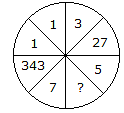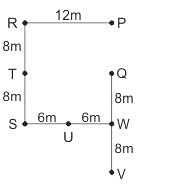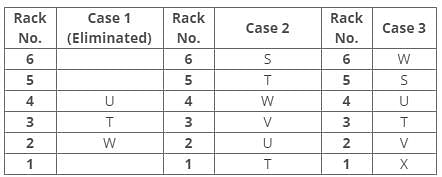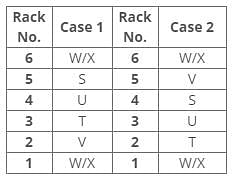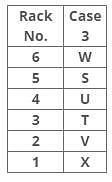WB Police Constable Mock Test - 5 - WB Police Constable MCQ
30 Questions MCQ Test - WB Police Constable Mock Test - 5
Direction: Read the following passages carefully and answer the question that follows.
The ancient Harappan Civilization emerged, flourished and collapsed under a steadily weakening monsoon, according to new research findings, that scientists say, provide the strongest evidence yet to link its risk and fall to changing climate. A team of scientists has combined multiple sets of date to show that weakening monsoon and reduced river water initially stimulated intensive agriculture and urbanisation, but later precipitated the decline and collapse of the subcontinent's earliest cities. The scientist said their research also suggests that a larger river, summed to be the mythical Saraswati, which once watered the Harappan Civilization's heartland between the suggests it was a glacier fed river with origins in the Himalyas. The findings appear today in the US Journal Proceedings of the National Academy of Science
Q. What task the team of scientists was assigned to?
The ancient Harappan Civilization emerged, flourished and collapsed under a steadily weakening monsoon, according to new research findings, that scientists say, provide the strongest evidence yet to link its risk and fall to changing climate. A team of scientists has combined multiple sets of date to show that weakening monsoon and reduced river water initially stimulated intensive agriculture and urbanisation, but later precipitated the decline and collapse of the subcontinent's earliest cities. The scientist said their research also suggests that a larger river, summed to be the mythical Saraswati, which once watered the Harappan Civilization's heartland between the suggests it was a glacier fed river with origins in the Himalyas. The findings appear today in the US Journal Proceedings of the National Academy of Science
Direction: Read the following passage carefully and answer the questions that follow each passage. Your answer to these questions should be based on the passage only.
Every successful man fails at some time. Failure tells you about your weaknesses, shortcomings, lack of preparations, lack of efforts. So if you can manage to learn from it contributes to lasting success. Extract the lesson to learn from failure and try again with redoubled vigor. Facing failure makes one strong, more wise and more resolute, spurs them on to greatest efforts. There is not failure in truth, save from within; unless we are beaten there, We are bound to succeed. Failures not only tell us that we couldn't prepare ourselves up to the level of success and with more hard work. Failures are the stepping stones of success. Every successful man has failed, not once but several times, in their life, but they analyzed the things in real perspective and tried again with more vigor and zeal and achieved success.
Q. What does failure teach, besides letting us know our shortcomings?
1. We couldn't prepare ourselves up to the level of success
2. It tells us that we still need to learn
3. We learn from mistakes
Which of the above statements is/are correct?
Every successful man fails at some time. Failure tells you about your weaknesses, shortcomings, lack of preparations, lack of efforts. So if you can manage to learn from it contributes to lasting success. Extract the lesson to learn from failure and try again with redoubled vigor. Facing failure makes one strong, more wise and more resolute, spurs them on to greatest efforts. There is not failure in truth, save from within; unless we are beaten there, We are bound to succeed. Failures not only tell us that we couldn't prepare ourselves up to the level of success and with more hard work. Failures are the stepping stones of success. Every successful man has failed, not once but several times, in their life, but they analyzed the things in real perspective and tried again with more vigor and zeal and achieved success.
1. We couldn't prepare ourselves up to the level of success
2. It tells us that we still need to learn
3. We learn from mistakes
Which of the above statements is/are correct?
| 1 Crore+ students have signed up on EduRev. Have you? Download the App |
Direction: Read the following passages carefully and answer the question that follows.
The ancient Harappan Civilization emerged, flourished and collapsed under a steadily weakening monsoon, according to new research findings, that scientists say, provide the strongest evidence yet to link its risk and fall to changing climate. A team of scientists has combined multiple sets of date to show that weakening monsoon and reduced river water initially stimulated intensive agriculture and urbanisation, but later precipitated the decline and collapse of the subcontinent's earliest cities. The scientist said their research also suggests that a larger river, summed to be the mythical Saraswati, which once watered the Harappan Civilization's heartland between the suggests it was a glacier fed river with origins in the Himalyas. The findings appear today in the US Journal Proceedings of the National Academy of Science
Q. What was the controversy in the passage?
The ancient Harappan Civilization emerged, flourished and collapsed under a steadily weakening monsoon, according to new research findings, that scientists say, provide the strongest evidence yet to link its risk and fall to changing climate. A team of scientists has combined multiple sets of date to show that weakening monsoon and reduced river water initially stimulated intensive agriculture and urbanisation, but later precipitated the decline and collapse of the subcontinent's earliest cities. The scientist said their research also suggests that a larger river, summed to be the mythical Saraswati, which once watered the Harappan Civilization's heartland between the suggests it was a glacier fed river with origins in the Himalyas. The findings appear today in the US Journal Proceedings of the National Academy of Science
Direction: Read the following passage carefully and answer the questions that follow each passage. Your answer to these questions should be based on the passage only.
Every successful man fails at some time. Failure tells you about your weaknesses, shortcomings, lack of preparations, lack of efforts. So if you can manage to learn from it contributes to lasting success. Extract the lesson to learn from failure and try again with redoubled vigor. Facing failure makes one strong, more wise and more resolute, spurs them on to greatest efforts. There is not failure in truth, save from within; unless we are beaten there, We are bound to succeed. Failures not only tell us that we couldn't prepare ourselves up to the level of success and with more hard work. Failures are the stepping stones of success. Every successful man has failed, not once but several times, in their life, but they analyzed the things in real perspective and tried again with more vigor and zeal and achieved success.
Q. What does help us to come out of the failure?
Direction: Read the following passages carefully and answer the question that follows.
The ancient Harappan Civilization emerged, flourished and collapsed under a steadily weakening monsoon, according to new research findings, that scientists say, provide the strongest evidence yet to link its risk and fall to changing climate. A team of scientists has combined multiple sets of date to show that weakening monsoon and reduced river water initially stimulated intensive agriculture and urbanisation, but later precipitated the decline and collapse of the subcontinent's earliest cities. The scientist said their research also suggests that a larger river, summed to be the mythical Saraswati, which once watered the Harappan Civilization's heartland between the suggests it was a glacier fed river with origins in the Himalyas. The findings appear today in the US Journal Proceedings of the National Academy of Science
Q. Why the Harappan Civilisation collapsed?
Direction: Read the following passage carefully and answer the questions that follow each passage. Your answer to these questions should be based on the passage only.
Every successful man fails at some time. Failure tells you about your weaknesses, shortcomings, lack of preparations, lack of efforts. So if you can manage to learn from it contributes to lasting success. Extract the lesson to learn from failure and try again with redoubled vigor. Facing failure makes one strong, more wise and more resolute, spurs them on to greatest efforts. There is not failure in truth, save from within; unless we are beaten there, We are bound to succeed. Failures not only tell us that we couldn't prepare ourselves up to the level of success and with more hard work. Failures are the stepping stones of success. Every successful man has failed, not once but several times, in their life, but they analyzed the things in real perspective and tried again with more vigor and zeal and achieved success.
Q. What message does the author wants to convey to readers through this passage?
Direction: Read the following passages carefully and answer the question that follows.
Why doesn't the air remain still ? The reason is that air, when it becomes heated, becomes lighter, and it rises. When it rises, other air moves in to take its place. The temperature of air becomes like the surface of the earth over which it travels. Over dry land, the air can become very hot. Then, when the sun goes down, it cools off quickly. Over the water air heats up more slowly and cools off more slowly. These changes cause the movement of air,which we call wind.
Q. This passage is mainly about?
A new menace is cars-and worse, luxury Sedans and Sport Utility Vehicles(SUVs) which run on highly polluting diesel, and which now account for fully one-half of total car sales, up from under 30 percent a year ago. Although, growth of passenger vehicle sales has slowed down over the past year, the 20 year long trend of furious privatization of urban transport continue unabated. Private vehicles are choking roads, slowing down traffic-in particular public buses-and creating terrible jams and snarl ups in city after city. The introduction and rapid expansion of super expensive metro rail systems, which the poor cannot afford, have failed to slow down the runaway growth of private transport. There is little systematic effort except in a handful of cities to harvest rainwater and none at all at recycling water or curtailing its abuse by the rich through the flushing of wasteful toilets designed a century ago in Europe-even though water scarcity is acute and growing.
Q. What means is faced by the country?
Direction: Read the following passages carefully and answer the question that follows.
Why doesn't the air remain still ? The reason is that air, when it becomes heated, becomes lighter, and it rises. When it rises, other air moves in to take its place. The temperature of air becomes like the surface of the earth over which it travels. Over dry land, the air can become very hot. Then, when the sun goes down, it cools off quickly. Over the water air heats up more slowly and cools off more slowly. These changes cause the movement of air,which we call wind.
Q. Over dry land, the air?
A new menace is cars-and worse, luxury Sedans and Sport Utility Vehicles(SUVs) which run on highly polluting diesel, and which now account for fully one-half of total car sales, up from under 30 percent a year ago. Although, growth of passenger vehicle sales has slowed down over the past year, the 20 year long trend of furious privatization of urban transport continue unabated. Private vehicles are choking roads, slowing down traffic-in particular public buses-and creating terrible jams and snarl ups in city after city. The introduction and rapid expansion of super expensive metro rail systems, which the poor cannot afford, have failed to slow down the runaway growth of private transport. There is little systematic effort except in a handful of cities to harvest rainwater and none at all at recycling water or curtailing its abuse by the rich through the flushing of wasteful toilets designed a century ago in Europe-even though water scarcity is acute and growing.
Q. What did metro rail system fail to do ? Find out the false statement out of the given options.?
Directions to Solve
In each of the following questions, arrange the given words in a meaningful sequence and thus find the correct answer from alternatives.
Question -
Arrange the words given below in a meaningful sequence.
1. Index 2. Contents 3. Title 4. Chapters 5. Introduction
If 9th of the month falls on the day preceding Sunday, on what day will 1st of the month fall?
If 1st October is Sunday, then 1st November will be
Direction: Read the following information carefully and answer the questions that follow.
Sunita is taller than Seeema and Renu, Renu is shorter than Radha and Gauri. Bina is taller than Radha and shorter than Sunita. Sunita is not the tallest and Renu is not the shortest.
Q. Who is the shortest?
Five student participated in the scholarship examination. Sudha scored higher than Puja. Kavita scored lower than Suma but higher than Sudha. Mamta scored between Puja and Sudha. Who scored lowest in the examination?
Directions: A series of figures is given below. Checking the pattern in the first two figures, you have to find the missing number in the third.

In each of the following questions, select a figure from amongst the four alternatives, which when placed in the blank space of figure (X) would complete the pattern.
Identify the figure that completes the pattern.

In each of the following questions, select a figure from amongst the four alternatives, which when placed in the blank space of figure (X) would complete the pattern.
Identify the figure that completes the pattern.

In each of the following questions, select a figure from amongst the four alternatives, which when placed in the blank space of figure (X) would complete the pattern.
Identify the figure that completes the pattern.

Hemant started from his house and walked 3km eastward, then he turned right and walked 2km, then again he turned left and walked 1 km, then turned right and walked 2 km. He turned right again and walked 1 km and reached his school. What is the minimum distance between Hemant’s house and his school?
Direction: Study the following information and answer the given questions carefully.
There are eight students (P, Q, R, S, T, U, V and W) in a ground. P is 12 m east of R. S is 16 m south of R. T is exactly between R and S. Q is 8 m north of W, which is exactly between Q and V. U is exactly between W and S. U is 6 m east of S.
Q. What is the distance between student T and student Q?
Raj starts from his office facing West and walks 100 m straight, then takes a right turn and walks 100 m. further, he takes a left turn and walks 50 m. In which direction is Raj now from the starting point?
Direction: Study the following information and answer the given questions carefully.
Anurag is standing at point P, facing the north direction. He starts walking towards the west and reaches point Q after walking 12m. Then he moves 12m to his right towards point R. From point R, he again moves his right to reach point S, which is 8m apart from point R. He again moves towards the right to reach point T after covering a distance of 6m from point S. Finally, he moves 12m to his left to reach point U.
Q. Point U is in _____ direction of point S.
Directions: Each of the following consists of a question and two statements numbered I and II given below it. You have to decide whether the data provided in the statements are sufficient to answer the question.
Which statement is required to derive the conclusion - 'No Player is a Champion'?
Statement I: All Stars are Goalkeepers.
Statement II: No Champion is a Player.
Directions: Each of the following consists of a question and two statements numbered I and II given below it. You have to decide whether the data provided in the statements are sufficient to answer the question:
Among six boxes – S, T, U, V W, and X were placed from top to bottom in rack where the bottom-most rack is numbered 1. Which box is placed on the 3rd from the bottom?
Statement I: S is placed 3 boxes above V. One box is placed between U and W, which is placed in even rack. As many boxes are above U is below T, which is not placed in the bottom rack.
Statement II: As many boxes are placed above W is same as below X. U is placed immediately above T and immediately below S.
Directions: Each of the following consists of a question and two statements numbered I and II given below it. You have to decide whether the data provided in the statements are sufficient to answer the question.
Six persons – A, B, C, D, E and F are sitting in a row facing north. Who sits to the immediate left of C?
Statement I: C is the neighbour of A and E, who sits on the extreme right end of the row.
Statement II: C is third to the right of F and second to the left of D.



